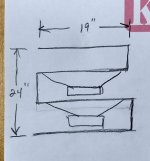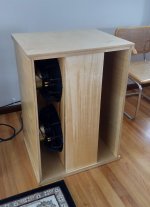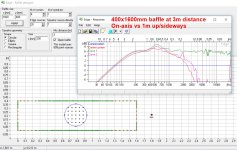An externally hosted image should be here but it was not working when we last tested it.
I have seen pictures of this system before and thought "what is that all about"???
I don't quite understand the purpose of the two banks of three woofers, one on the front side and one on the back side of the support system. They are nude, so dipoles, and this would make a second order gradient. There really are not too many "advantages" of that kind of system from what I can tell, over the "first order gradient" AKA dipole.
Then there is the MTM top. What are the designers doing there? I don't know the crossover point, and whether both midranges are used the same way or one is rolled off earlier to make an MT type system. In a dipole system you usually would not cross over to a monopole tweeter until a pretty high frequency... just not sure what is the plan here. Would be interested to know, however.
On the other hand, it looks cool. Appeals to men who like metal and technology and contemporary art. As Nelson Pass says, high end audio is really entertainment, so what ever floats your boat is OK...
......
My understanding and experience with dipoles suggest max 3 octaves passband per unit/way. This means a 4-way, because each way must have some linear overlap too, for example like this: (alternative)
- sub 20-120Hz 2½oct (20-200Hz)
- bass 120-500Hz 2 oct (200-800Hz)
- mid 500- 2000Hz 2 oct (800-3200Hz)
- tweeter 2000- 20 000Hz 3½ oct (dipole physically possible only up to 6-7kHz with transducers available)
And because of physical limitations mentioned earlier in this thread, mid and tweeter must be narrow planar units.
Four way looks smart.
How do you recommend getting clean 20Hz with a dipole?
Question for you Dipole experts:
I recently built a Dipole Sub based on Linkwitz's Pheonix design. It is 19" X 24" wide. I wonder what baffle width to use in simulations such as "Edge program".
See the attached pictures. I am not sure if this is a simple "H Baffle".
Thanks for your help.
I recently built a Dipole Sub based on Linkwitz's Pheonix design. It is 19" X 24" wide. I wonder what baffle width to use in simulations such as "Edge program".
See the attached pictures. I am not sure if this is a simple "H Baffle".
Thanks for your help.
Attachments
Four way looks smart.
How do you recommend getting clean 20Hz with a dipole?
I don't!
- it is not needed
- a dipole system capable of that (100dB at 1m with THD<10%) would be enormously large
My practical choice is monopole 10" 25liter closed sub up to almost 200Hz, LR2 xo to dipole nude 12" makes cardioid response 100-200Hz. Minidsp. Room response almost flat from 15Hz up and low GD. Moderate distortion below 40Hz because monopole gets boost from boundaries. Me happy.
Details via the link in my signature
How do you recommend getting clean 20Hz with a dipole?
Nearfield stereo dipoles (w/ appropriate delay, eq., and placement relative to the listener's head). 😉

I don't quite understand the purpose of the two banks of three woofers, one on the front side and one on the back side of the support system. They are nude, so dipoles, and this would make a second order gradient. There really are not too many "advantages" of that kind of system from what I can tell, over the "first order gradient" AKA dipole.
I would suggest it is very unlikely to be a second-order dipole and more likely that the two banks of drive units are operated in phase. But it does not make much sense having the banks so widely separated and invites unnecessary comb filtering, limiting the bandwidth somewhat.
The Celestion SL6000 subwoofer makes much more dimensional sense, yields a symmetrical response with (nominally) even order distortion and double the output of a single driver.
Isn't that a Kyron audio speakers?
Kyron utilizes DSP filtering in crossovers, so probably the front row of speakers is delayed by the distance between the rows.
In effect there should be reinforced front part of "figure of eight" and weakened back one.
Kyron utilizes DSP filtering in crossovers, so probably the front row of speakers is delayed by the distance between the rows.
In effect there should be reinforced front part of "figure of eight" and weakened back one.
Isn't that a Kyron audio speakers?
In effect there should be reinforced front part of "figure of eight" and weakened back one.
No. That would be a cardioid, which is still a first order response - and requires delaying the rear bank, not the front.
Last edited:
in a typical room, there is indeed not much point for dipole bass below 50hz
but if you have neighbors they will love you for it 🙂
but if you have neighbors they will love you for it 🙂
in a typical room, there is indeed not much point for dipole bass below 50hz
but if you have neighbors they will love you for it 🙂
That's the reason I am VERY interested in dipole bass, as low as I can go. The difference in leakage compared to a sealed sub is very real. With a nearfield dipole sub I can play >20dB louder than a farfield sealed sub would let me before neighbour complaints. In a medium/high density living arrangement dipole bass is a no brainer.
Question for you Dipole experts:
I recently built a Dipole Sub based on Linkwitz's Pheonix design. It is 19" X 24" wide. I wonder what baffle width to use in simulations such as "Edge program".
See the attached pictures. I am not sure if this is a simple "H Baffle".
Thanks for your help.
I would do it like this:
Attachments
...The difference in leakage compared to a sealed sub is very real. With a nearfield dipole sub I can play >20dB louder than a farfield sealed sub would let me before neighbour complaints. In a medium/high density living arrangement dipole bass is a no brainer.
Can you explain that, please.*
B.
*gosh, I sure hope the advocates of the cabin pressure fantasy aren't coming back
Last edited:
^when I look at it again, perhaps virtual baffle width is much smalller. These are like cardioids, simulations might go wrong for may reasons
- unequal distance to edge front-back and up-down
- boundary effect of the floor
- boundary effect of the wall on the backside
- what else...
And, measuring at opening "mouth" and calculations -like Linkwitz and Nelson Pass, most likely are wrong too. A thread Nelson Pass: The Slot Loaded Open Baffle Project
- unequal distance to edge front-back and up-down
- boundary effect of the floor
- boundary effect of the wall on the backside
- what else...
And, measuring at opening "mouth" and calculations -like Linkwitz and Nelson Pass, most likely are wrong too. A thread Nelson Pass: The Slot Loaded Open Baffle Project
I think someone earlier used the word "pressurise" in inverted commas, I wondered what was meant but forgot to askCan you explain that, please.*
B.
*gosh, I sure hope the advocates of the cabin pressure fantasy aren't coming back
Thanks for that, it appears to be right since I would have expected someone to correct you if it wasn't.Did you get this question about resonance in U-baffles sorted? I didnt see an answer so did some extrapolations
I guess from first principles
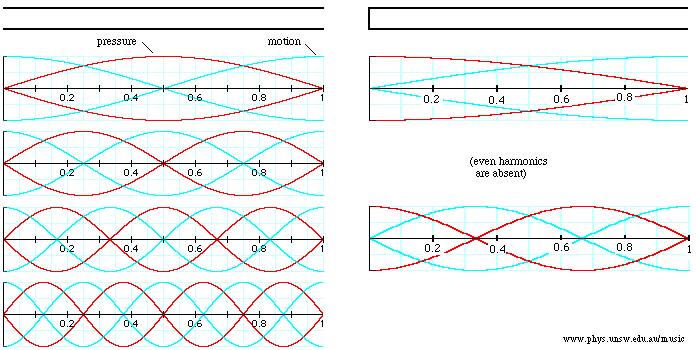
applied to a U-baffle or H-frame there will be two resonances.
1. Quarter wavelength of the depth (in the direction of the driver movement from the driver to the opening of the baffle)
2. Half wavelength of the smallest dimension of height or width ( 90 degrees to the direction of the driver movement)
From that it follows if using a U or H frame there will be a limit on upper extension due to resonance. This limit will occur earlier at lower frequencies for larger drivers and/or increasing depth to allow better low frequency extension.
Depth dimension should be half that of the largest traverse plane (width or height).
H-baffles should have better low frequency output with the same upper resonance free extension then a U-baffle by using the same depth dimension fore and aft.
A U-baffle made like a floor stander box speaker with a base and lid and the back off could easily get resonance way too early. This could be fixed with a horizontal shelf installed above the woofer.
A problem arises trying to use a U/H-frame for bass. To get good low extension output a a large dipole separation is indicted leading to lower resonance frequency. However woofers can output high second harmonics. These second harmonics are likely to extend into the U/H-frame resonant zone and be further enhanced with harmonic distortion swamping the fundamentals.
This all suggests that demanding a dipole be flat to 20Hz is going against the natural order. It might be possible with enough money, power and time but it might not be elegant.
Im just made all of that up and dont expect sound waves to comply. Please correct logic failures 🙂
I Edged the response of asymmetric dipole baffles, standard height.
Low end gets better and peak widens.
Off-axis stays surprisingly symmetric.
Here linked pics of Nelson Pass's SLOB 2-way. Huge, lots of eq and 20Hz -10dB at 1m (still nearfield of this baffle)
The Slot Loaded Open Baffle Project Article By Nelson Pass
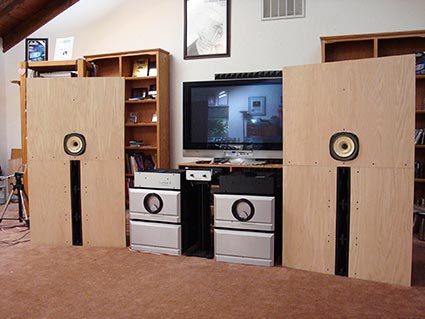
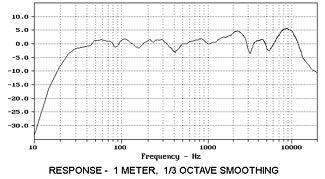
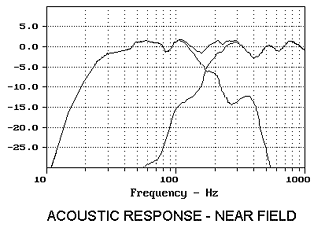
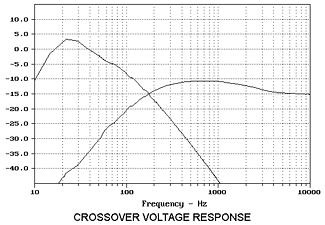
Low end gets better and peak widens.
Off-axis stays surprisingly symmetric.
Here linked pics of Nelson Pass's SLOB 2-way. Huge, lots of eq and 20Hz -10dB at 1m (still nearfield of this baffle)
The Slot Loaded Open Baffle Project Article By Nelson Pass




Attachments
Last edited:
Obviously a dipole bass doesn't benefit from "pressurizing" like sealed bass, which happens below lowest room mode. Remember that this is different from boundary reinforcement, which happens already higher in frequency, and differently with dipole/monopole.
Aha! I had time on my hands.........ok, I think I know what you meant....?I think someone earlier used the word "pressurise" in inverted commas, I wondered what was meant but forgot to ask
Question for you Dipole experts:
I recently built a Dipole Sub based on Linkwitz's Pheonix design. It is 19" X 24" wide. I wonder what baffle width to use in simulations such as "Edge program".
See the attached pictures. I am not sure if this is a simple "H Baffle".
Thanks for your help.
I would do this:
1. measure the response at both the front and the back openings, in the plane of the opening. This will capture the output (like a nearfield measurement) of only the driver, in the box, plus the resonance(s) of the tunnel of the H-frame, but not the dipole (far-field) response
2. Model the dipole response in the Edge by using a square baffle. For the length of each edge, use the front-to-back lenth of the H-frame plus about 1/3rd of the height. The driver should be in the center of the square baffle.
Add the two responses to get a rough model of the far-field response.
If you do not measure the front and back response as in (1) you will not capture the resonances, which cannot easily be modeled.
I Edged the response of asymmetric dipole baffles, standard height.
Low end gets better and peak widens.
Off-axis stays surprisingly symmetric.
Here linked pics of Nelson Pass's SLOB 2-way. Huge, lots of eq and 20Hz -10dB at 1m (still nearfield of this baffle)
You can glean some info on the un EQ'd response from this plot:
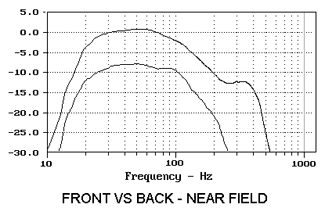
The upper curve is the front and the lower the rear. I know this because the "slot" has a resonances, and that is the 'bump" around 350Hz in the upper curve. Without EQ this would stick up quite severely I think.
The SLOB has some practically useful traits, but this one is really huge. It would be better for it to be away from the back wall, but that is not so practical, and the large baffle is in the way acoustically speaking. On the plus side you can use a large number of opposed drivers up and down the length of it. That adds up to a lot of displacement. The front-to-back pathlength is large, which translates to very little dipole cancellation until you get to very low frequencies.
You need to use smaller (e.g. 8" would be perfect, 10" OK, but not larger) drivers to keep the resonance frequency high enough. NP used 8" drivers. The resonance frequency of the slot is primarily determined by the depth of the slot and the deeper it is the lower the resonance frequency and you don't want this in the passband. Also, like a U-frame, the resonance only happens on one side of the thing so you cannot EQ it out very well and keeping it high and out of the passband is the best approach.
Last edited:
a dipole system capable of that (100dB at 1m with THD<10%) would be enormously large
No, I showed that 20Hz is easily done with an H-frame, with an 18" subwoofer driver and D=30". See my POST including measurements earlier in this thread. THD is largely a function of driver choice.
Maybe you meant a planar OB to 20 Hz?
Last edited:
- Home
- Loudspeakers
- Multi-Way
- In Pursuit of a 20-20k Dipole Loudspeaker
